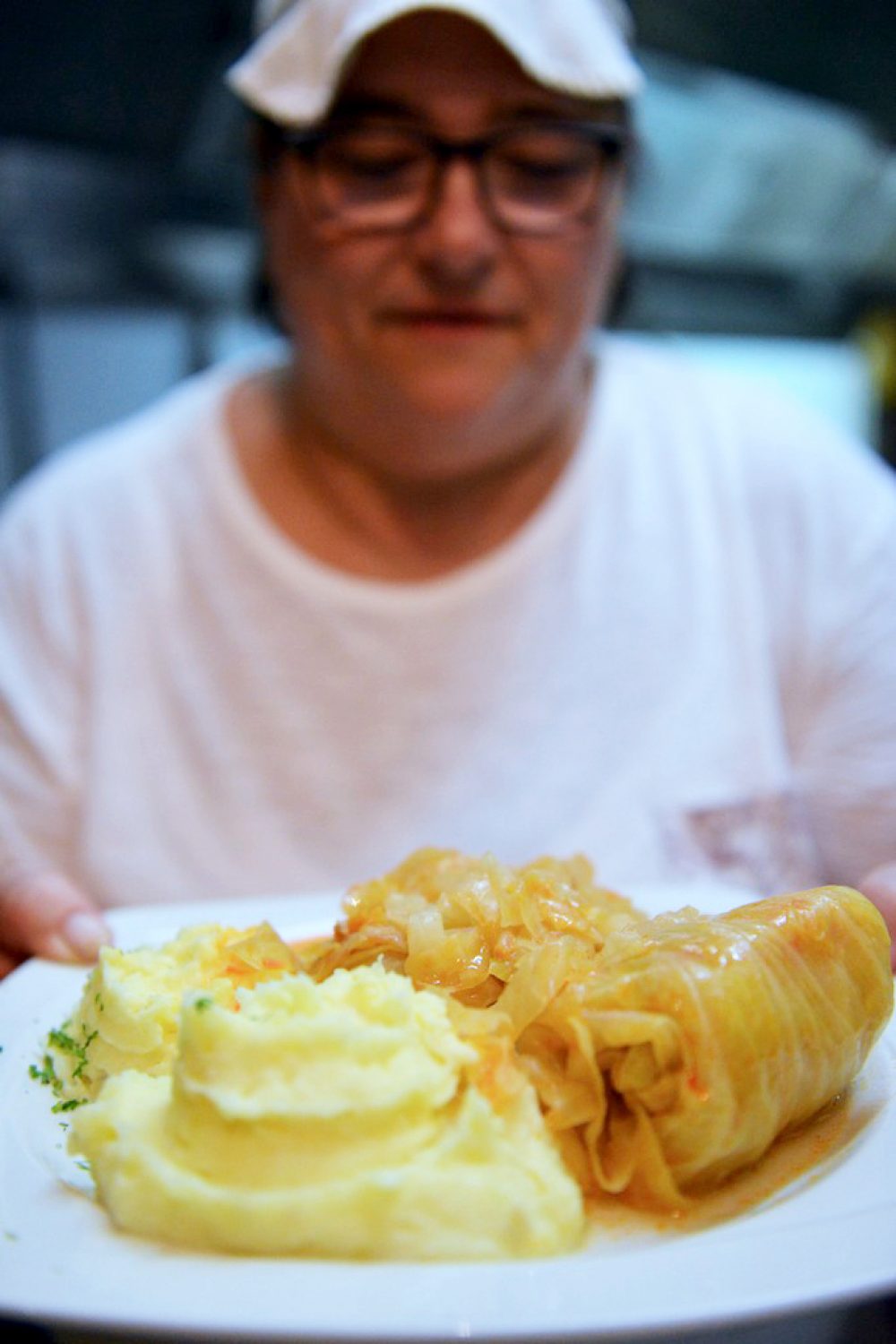Meat is not eaten moderately in Zagreb. Reason enough I should have taken my waitress’ warning seriously. But in the windowless, salmon-tiled basement dining room of Restoran Valentino—a no-English diner on the outskirts of the Croatian capital—an ice-cold liter of red wine going down smoother than it should, Google Translate persuades me to forge ahead.
The waitress raises her eyebrows and chuckles before walking off. The app assures me I’ve ordered a few sausages. But she returns with a stratified platter—heaped layers of french fries, skewered chunks of beef, kielbasa-like links, oblong meat patties, thin steaks, dozens of pita bread wedges and ... a few sausages. A garnish, really. The whole affair would feed 20 people.
I quickly tap into my phone: “I am an idiot! Please bring plates to the other tables for them to share!” I have no idea how that translated in Croatian, but my fellow diners laugh and hoist glasses of wine in honor of the mound of meat we share, a fitting interlude in a weeklong search for something lighter and brighter.
Much of Croatia is coastline, a narrow strip along the Adriatic Sea squeezed between Slovenia to the north and Bosnia and Herzegovina to the south. There, the seafood shines, the flavors of Greece and Italy dominant. But move inland toward Zagreb, and squid and octopus give way to the heft of pork and beef, flavors reminiscent of Hungary and Turkey.
My path to something lighter begins at Dolac Market, a sprawling indoor-outdoor-underground daily event. Everywhere, there are mounds of ghostly white whole heads of cabbage smelling vaguely of vinegar, the result of a year-long fermentation—a tradition the region is famous for.

Fermented cabbage keeps sarma tender abd tangy.
I’d arrived at the cusp of sarma season, that fall-to-winter shoulder when meat-stuffed peppers (locally called paprika) give way to meat-stuffed cabbage leaves, or sarma. Croatians consider them a dish mostly one and the same—a filling of rice, ground pork and seasonings stuffed in either peppers or translucent cabbage leaves. I grew up eating both, to my dismay. A flavorless, heavy filling wrapped in a tasteless, rubbery skin.
Locals send me down the street to Restoran Stari Fijaker, family-run and specializing in traditional cooking. My table—dressed with a cloth of red hearts, the symbol of the city—fills to capacity. Grilled mushrooms. Beef stew. Stuffed peppers. Mashed potatoes striated with caramelized onions. And, of course, sarma—thick oblongs with a red-flecked sauce spooned over and around. One bite and clearly these are not the stuffed cabbage leaves I loathed as a child.
The filling is meaty and rich, yet bright and complex. Lots of paprika at play. The sauce is much the same, bold with pork and more paprika, yet still light. But the unlikely standout is the cabbage itself. Tangy and tender, not tasteless and tough. In the back kitchen of Stari Fijaker, cook Adrijana Salopek—who goes by Ninja for the headband she wears—shows me how she makes them, a recipe she learned from her grandmother. The secret, of course, is the fermented cabbage, which not only wraps the filling, but also is diced into both it and the sauce the sarma cook in.
"I quickly tap into my phone: 'I am an idiot! Please bring plates to the other tables for them to share!'"
And back at Milk Street, that was our challenge. The rest of the recipe was much as one expects, and we followed Salopek’s with only minor variations, including precooking the rice to ensure it finished in the same time as the meat and opting for the ease of the oven rather than minding a simmering pot. But fermented whole heads of cabbage—essentially sauerkraut that has not been shredded—are hard to come by.
And that fermentation isn’t just a factor of taste, though it contributes significantly so. It also is a matter of texture. The pleasantly crisp, yet still-soft leaves of the sarma I ate got that way thanks to lactic acid fermentation, a natural process in which so-called beneficial bacteria consume the natural sugars in the leaves, breaking down cell walls and softening them in the process.
We tried numerous hacks to replicate this, including microwaving, freezing and boiling. And while we sometimes got the texture right, we never managed the vinegary tang key to brightening the otherwise heavy ingredients. But the solution was in the problem. Boiling the leaves in water didn’t give us the flavor we wanted. But adding vinegar, salt and seasonings to the water did. It was a simple matter to let the leaves slough off from the head as they reached the right texture and flavor.
After that, replicating Salopek’s lighter, brighter take on stuffed cabbage leaves was easy. And frankly, the results were too delicious to share with a restaurant full of strangers.




